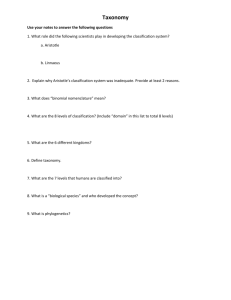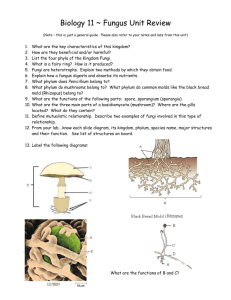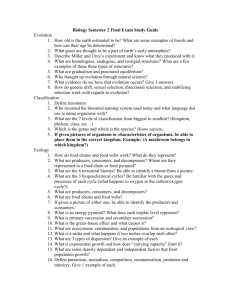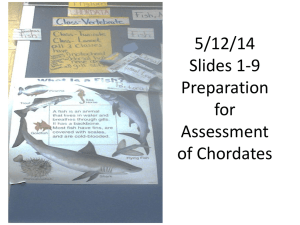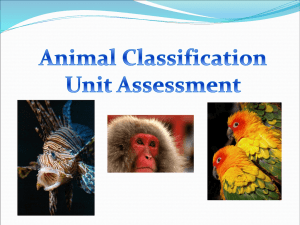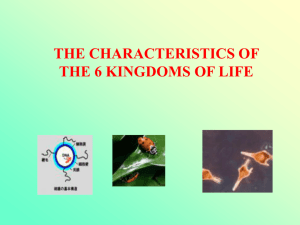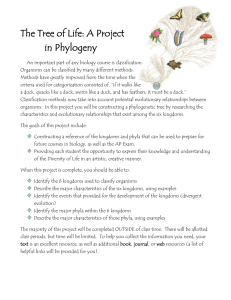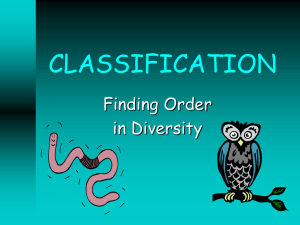Cellular taxonomy power pt
advertisement
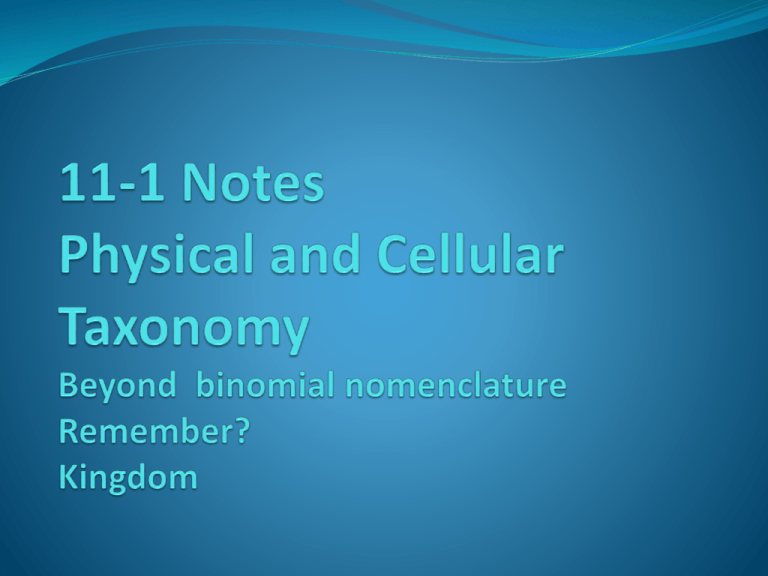
Remember? Kingdom, Phylum, Kingdom, Phylum, Class, Kingdom, Phylum, Class, Order, Kingdom, Phylum, Class, Order, Family, Kingdom, Phylum, Class, Order, Family, Genus, Kingdom, Phylum, Class, Order, Family, Genus, Species Taxonomy classified living organisms by their physical characteristics. That was all the scientists of the time could see. Linneus divided living things into 2 kingdoms: PLANTS AND ANIMALS After the invention of the microscope, it was quickly determined that the physical characteristics we could see were not enough to classify some organisms. Scientists had to consider cellular differences and molecular differences….. So Our classification of living things has expanded to include cellular and molecular level differences observed in the microscope and the laboratory. There are now 3 Domains and 6 Kingdoms! SO WHAT ARE THE CURRENT DOMAIN AND KINGDOMS? Some look familiar; a few look new. Those darn bacteria really did not fit in with plants or animals and had to have their own domain! Domain Bacteria Archaea Kingdom Eubacteria Archaebacteria Eukarya Protist Fungi Plantae Animalia Examples Streptocuccus, E. coli Methanogens, halophiles Amoeba, Paramecium slime molds Mushrooms, yeasts Mosses, ferns, flowering plants Sponges, insects, worms fishes, mammals So the Domain is the most inclusive (least specific category), Domain Kingdom Phylum Class Order Family Genus Species So what do modern day scientists look at to group organisms into particular categories? LOOKING AT EXAMPLE Outer characteristics Hair vs scales Inner characteristics Backbone vs none Cellular characteristics Nucleus vs none Molecular characteristics Chromatin vs none Here is an interesting thought Science has come a long way even from the species category to very specifically identify living things. We are all humans, but other than physical characteristics; hair color, height, etc. humans are identified by Fingerprints! AND even more specific ???? Our molecular structure instructions DNA Pick up a book from the room copy shelves and begin WS 18-3. Read then answer questions. Any you do not finish in class is HW Read the Cytology Lab to become familiar with the procedure. Lab starts on Tuesday. Your other HW assignment is Extra Credit Flashcards of the Unit 3 Vocab. We have 1 section left, then it will be test time on Unit 3. Unit 3 test date = Monday November 12

